Bluebook on China's competitiveness of global talent recruitment
 0 Comment(s)
0 Comment(s) Print
Print E-mail China.org.cn, September 15, 2017
E-mail China.org.cn, September 15, 2017
A bluebook report identifying China's relative weak competitiveness in wooing global talents as well as containing proposals for measures for different regions within China to improve was released on Sept. 11 in Beijing, as parts of a joint effort of the Center for China and Globalization (CCG) and the Institute of Development Studies at Southwestern University of Finance and Economics (SWUFE) in Sichuan.
The report, titled The Report on China's Regional International Talent Competitiveness 2017, is published as China is gearing up to attract more talented people from all over the world in order to boost its economic growth. It is an imperative to objectively evaluate the current status of China's competitiveness of global talent recruitment in order to identify the gap and find solutions.
CCG and SWUFE's Institute of Development Studies co-established an index model to assess China's regional competitiveness in attracting overseas talents by using six dimensions - population size, structure, innovation, policy, development and living conditions, supported by 13 secondary indices and 36 tertiary indices.
Based on the model, the report compiled a ranking of the most-preferred places in China for foreign talents. Futhermore, by comparing the situation in all of China's 31 province-level regions (Taiwan, Macao, and Hong Kong not included), the report mapped out policy measures to improve China's regional and national competitiveness to recruit more global talents.
The key highlights of the report are as follows:
• China's overall global talent competitiveness still lags behind many developed countries. The proportion of international workers in China is far below the world average. In 2015, only 0.06% of the country's population were foreigners, while the worldwide average proportion was 3.3%. Shanghai ranks the highest among all of the Chinese cities evaluated according to the 2017 report. Even so, it only attains 65.17 out of 100 in global talent competitiveness, followed by Beijing, Guangdong, and Jiangsu, all of which are the most economically developed regions in China.
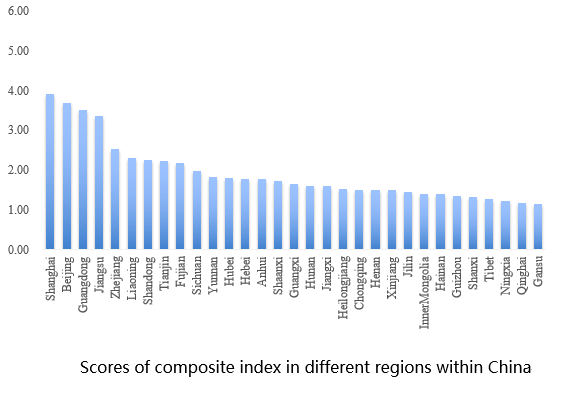
• Geographically, foreign talents are very unevenly spreaded in China with the gap between first placed Shanghai and last placed Shanxi reaching 0.8 out of a total score of 1. Beijing, Shanghai and Tianjin are the top three most favorite cities for foreign students, while Guangdong, Shanghai and Jiangsu are the first-tier cities which accommodate the most foreign experts.
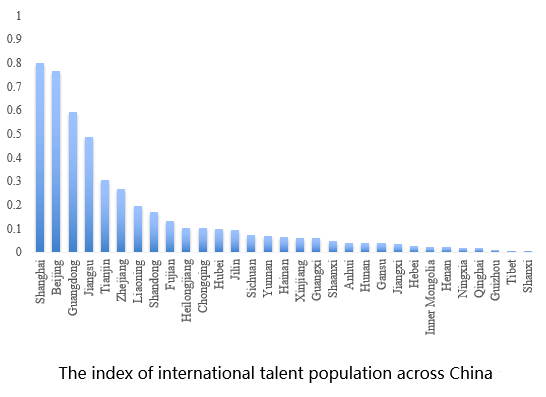
• In terms of the quality of the recruited global population, there is not a large margin between different provinces or regions. Anhui and the western regions score higher in global talent eudcation degree structure for having more foreign experts on science and technology research with strong academic backgrounds. Jiangsu, Guangdong, and Shanghai score the highest in global talent occupation structure for providing foreign workers room to develop their long-term career.
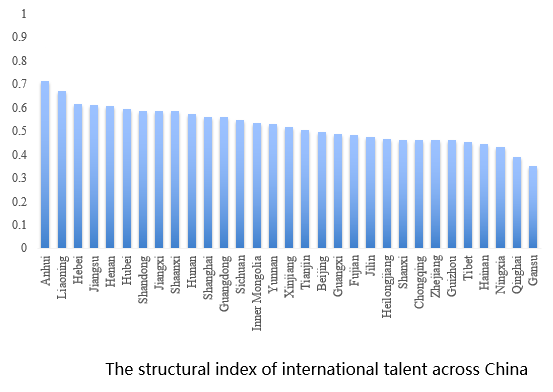
• Guangdong ranks the first in terms of international talent innovation, as the foreign workers there are foscused on innovative industries and activities, while the western region also has great potential in this regard. Shanghai, on the contrary, scores low on this index, because most international talents there are working in the financial industry, instead of innovative industries such as IT or high-end manufacturing.
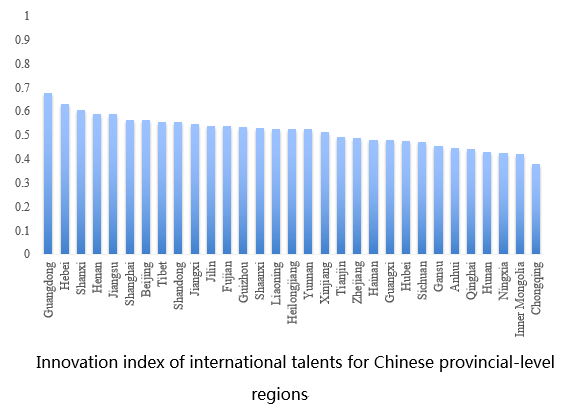
• The eastern coastal regions have more friendly international talent recuitment policies, while China’s mid and western regions lag behind. Jiangsu ranks first on this index, followed by Beijing, Zhejiang, and Guangdong. With respect to international talent recruitment policy innovation, Beijing, Shanghai and Guangdong score higher, as they have all been rolling out policies to reform entry and exit regulatory system to facilitate high-level international talents and their entrepreneurship and innovation activities in China.
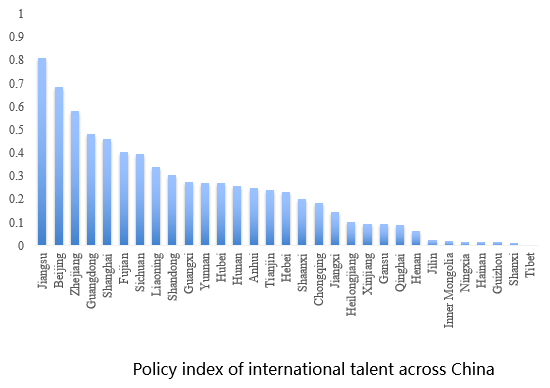
• Sharp margins exist between China’s coastal and inland region over creating a talent cultivation environment for foreign workers. Shanghai obtains a full score on this index. With extensive access to the global economy and strong international background, Shanghai has become a hub for forign trade and MNC headquarters. However, most regions still lack strength in building the appropriate surroundings for foreign talents.
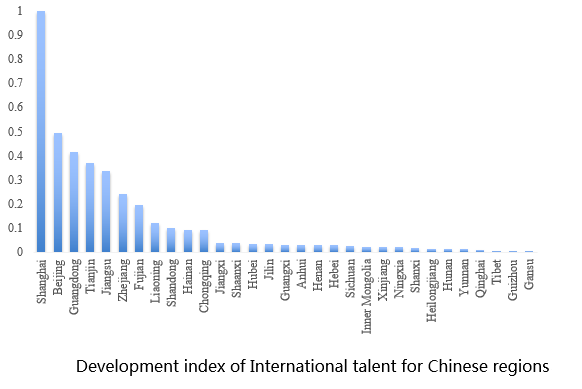
• Guangdong is selected by foreign talents as the most popular place to live, and China’s midwest also has great potential in attracting foreign talents with its better environment and living conditions. Guangdong, Jiangsu, Beijing, Shandong and Shanghai rank as the top 5 provinces/cities respectively for providing the best social security and services to foreign talents, such as healthcare and children’s education.
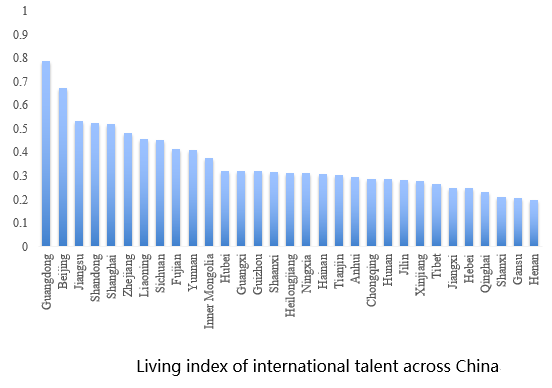
Based on the findings above, the report proposed to institutionally improve the work of inter-national talent recruitment in order to attract more foreign talents. Measures such as estab-lishing a governing entity specifically for international talent management, expanding inter-national talent recruitment policies which have been proved effective in pilot programs, and enhancing regional competitiveness for international talent through improved natural envi-ronments and living conditions were provided in the bluebook. (Li Xiaohua contributes to this article)






Go to Forum >>0 Comment(s)